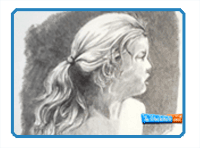
By Matt Fussell
I'll be honest, drawing hair is not the easiest thing to do. Hair is complex and is therefore, complex to draw. It is not the hardest thing to draw either. If you know how to see hair in terms of shapes and lines, then it becomes just like drawing anything else. You must observe hair closely in order to draw it realistically.
The first video that follows features excerpts from a recorded Live Lesson on drawing the texture of hair. You'll notice that the illusion of the texture is created through the use of value and the contrast between the darks and the lights. The cross contour lines are important as well. With these two factors working together, the illusion of realistic hair is easily managed in a drawing. (You can access the full length lesson here. Live lessons are for members.)
There is no formula for drawing hair. I wish there was. Every head of hair is unique and when viewed from different angles, looks completely different. Light reflects off of hair differently as well. Not to mention the fact that hair comes in an indefinite number of textures, colors, and shapes. We have no choice but to purely draw what we see. But drawing in this way is the true definition of drawing and by practicing drawing hair, you will become better at drawing just about everything else.
Although there is no formula to drawing hair, there are some things to keep in mind...
1. Drawing realistic hair requires that you create contrast. This contrast can be the result of texture, but most likely it is because of value.
2. Hair is usually darker in the folds and parts of the hair-and around the face.
3. Don't draw every strand of hair. Instead, draw shapes and lines-not "hair".
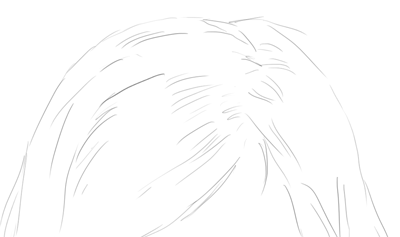
Begin drawing hair by drawing the outline of the outside of the hair. You'll want to notice the dark areas and the light areas in the hair. Try to map out these areas as shapes. Don't try to draw every strand of hair. Instead you'll want to concentrate only on shapes and the value within them.
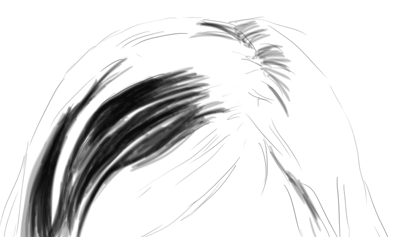
Next, you'll begin to add value to the darker shapes first. If you are painting, you may go dark right off the bat. If you are drawing, you'll want to build up the value slowly. Be careful not to get too dark too quickly. Again, don't think about hair-think shapes and lines. (Hint-The darkest areas are usually around the sides of the face and the parts of the hair.)
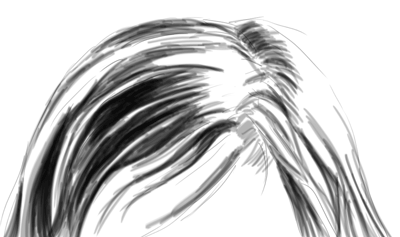
Continue darkening up the shapes and lines that you see. When you draw lines in the hair, make sure that they flow in the direction that the hair grows.
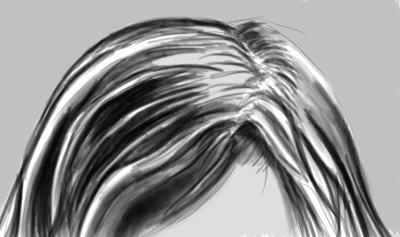
Drawing realistic hair relies on contrast. Be sure to have a background value in mind. This will make your hair pop.
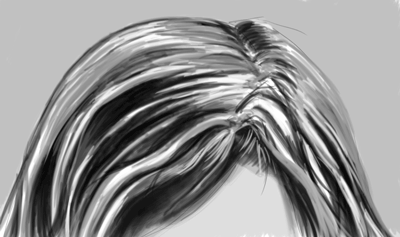
Work the values in your drawing. Use white if you are painting to make lighter strands of hair. If you are drawing, use an eraser to erase out lighter strands of hair.
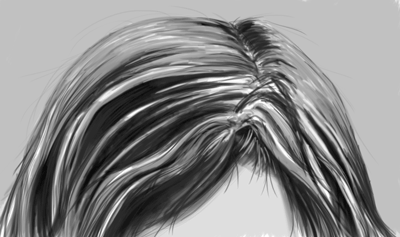
Drawing hair takes time. It's a lot of working values back and forth. With some practice though, drawing hair is not too difficult.
Here are some more art lessons that you may like...
Facial Proportions
How to Draw a Mouth with Colored Pencils
How to Draw an Eye with Charcoal